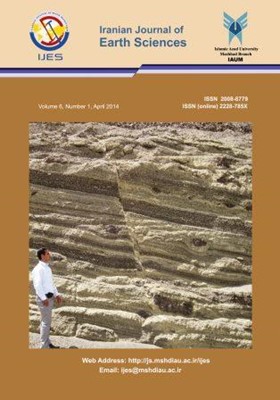The effect of estimation methods on multifractal modeling for mineralized zone delineation in the Dardevey iron ore deposit, NE Iran
Subject Areas : MineralogyPeyman Afzal 1 , Shahab Shahbeik 2 , Parviz Moarefvand 3 , Amir Bijan Yasrebi 4 , Renguang Zuo 5 , Andrew Wetherelt 6
1 - Department of Mining Engineering, Faculty of Engineering, South Tehran Branch, Islamic Azad University, Tehran, Iran
2 - Department of Mining Engineering, Faculty of Engineering, South Tehran Branch, Islamic Azad University, Tehran, Iran
3 - Amirkabir University of Technology, Mining and Metallurgy Faculty, Tehran, Iran
4 - Camborne School of Mines, University of Exeter, Penryn, UK
5 - State Key Laboratory of Geological Processes and Mineral Resources, China University of Geosciences,
Wuhan 430074, Beijing 100083, China
6 - Camborne School of Mines, University of Exeter, Penryn, UK
Keywords:
Abstract :
The purpose of this study is to identify the effect of Ordinary Kriging (OK) and Inverse Distance Weighted (IDW) estimation methods for the delineation of mineralized zones based on subsurface data using concentration–volume (C–V) multifractal modeling in the Dardevey iron ore deposit, NE Iran. Variograms and anisotropic ellipsoid were generated for the Fe distribution by the above estimation methods. Continuity of ore and waste, the number of points involved, discretization factor for ore and waste boundaries and block model were generated for reserve estimation purposes. In addition, the C-V log–log plots based on the estimation methods represent the various mineralized zones fromexisting thresholds, and error estimations in both methods were compared. The comparison and interpretation of themineralized zones based on the C–V fractal modeling show that the error is less in the OK method, although the volume of extremely, highly and moderate zones resulting from the OK method is greater than the IDW method. The thresholds considering C-V fractal modeling for extremely, highly, moderately and weakly mineralized zones are 60.37%, 55.27% and 45.66%respectively for the OKmethod and 55.14%, 50.12% and 41.48%respectively for the IDW method. According to the threshold values, the error in the OK methodis less than 20% while the error estimation resulted from the IDW method increases to 60%.


